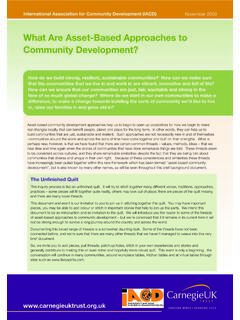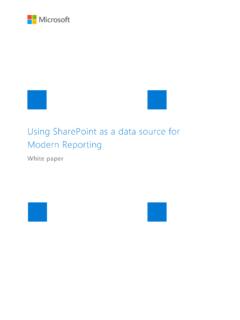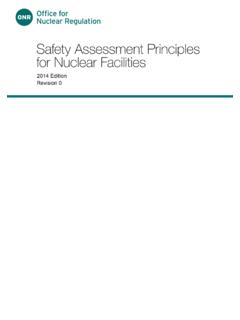Transcription of Unit 3: Mathematics in Construction and the Built …
1 Mathematics in Construction and the Built environment Pearson BTEC Level 3 Nationals (QCF) specification in Construction and the Built environment Issue 2 July 2020 Pearson Education Limited 20201 unit 3: Mathematics in Construction and the Built EnvironmentUnit code: J/600/0451 QCF Level 3: BTEC NationalsCredit value: 10 Guided learning hours: 60 Aim and purposeThe aim of this unit is to enable learners to use mathematical techniques and methods to manipulate and/or solve formulae, equations and algebraic expressions. Learners will be able to select and apply mathematical, geometric, trigonometric, graphical and statistical techniques to solve practical Construction introductionConstruction, civil engineering and building services engineering are technical disciplines which require the collection, processing and use of numerical data.
2 For example, in a simple Construction project the dimensions of a structure are designed and specified by the architect or engineer, the cost of the work is determined by the cost control surveyor, the quantity of materials to be ordered is determined by the buyer, and the setting out dimensions and angles may be calculated by the contractor. In more complex situations, design engineers use various formulae to calculate properties such as the rate of the flow of water through pipes for drainage calculations, or the levels of bending moments in beams for sizing structural is therefore essential that learners develop an appropriate understanding of the mathematical methods and techniques required for these key activities, and of how to apply them unit explores the rules for manipulating formulae and equations, calculating lengths, areas and volumes, determining trigonometric and geometric properties, and applying graphical and statistical completion of the unit learners will be able to select and apply appropriate mathematical techniques to address a wide variety of standard, practical, industry-related outcomesOn completion of this unit a learner should.
3 1 Be able to use basic underpinning mathematical techniques and methods to manipulate and/or solve formulae, equations and algebraic expressions2 Be able to select and apply mathematical techniques correctly to solve practical Construction problems involving perimeters, areas and volumes3 Be able to select and apply geometric and trigonometric techniques correctly to solve practical Construction problems4 Be able to select and apply graphical and statistical techniques correctly to solve practical Construction in Construction and the Built environment Pearson BTEC Level 3 Nationals (QCF) specification in Construction and the Built environment Issue 2 July 2020 Pearson Education Limited 20202 unit content1 Be able to use basic underpinning mathematical techniques and methods to manipulate and/or solve formulae, equations and algebraic expressions Calculator functions: add; subtract; multiply; divide; sin; cos; tan; arc sin; arc cos; arc tan; exponents; radiansTechniques and methods: mathematical operators; factorisation; expansion; transposition; substitution and elimination; rounding; decimal places; significant figures; approximation; truncation errors and accuracy; calculator functions and useFormulae, equations and algebraic expressions: linear; simultaneous; quadratic equations; arithmetic progressions.
4 Binomial theorem2 Be able to select and apply mathematical techniques correctly to solve practical Construction problems involving perimeters, areas and volumes Mathematical techniques: simple mensuration formulae and numerical integration methods (mid-ordinate rule; trapezoidal rule; Simpson s rule)Practical Construction problems involving perimeters, areas and volumes: calculations for simple and compound shapes eg rectangles, trapeziums, triangles, prisms, circles, spheres, pyramids, cones and regular and irregular surface areas and volumes3 Be able to select and apply geometric and trigonometric techniques correctly to solve practical Construction problems Trigonometric techniques: sine, cosine, tangent ratios; sine rule; cosine rule; triangle area rulesGeometric techniques: properties of points, lines, angles, curves and planes; Pythagoras rule; radians; arc lengths and areas of sectorsPractical Construction problems: geometric techniques to determine length, area and volume for shapes containing straight lines and curves; use of trigonometry to determine dimensions in 2D and 3D eg surveying, setting out, dimensions of pitched roof and similar4 Be able to select and apply graphical and statistical techniques correctly to solve practical Construction problemsGraphical techniques: Cartesian and polar co-ordinates; intersections of graph lines with axes; gradients of straight lines and curves; equations of graphs; areas under graphs; solution of simultaneous and quadratic equationsStatistical techniques: processing large groups of data to achieve mean, median, mode and standard deviation; cumulative frequency, quartiles, quartile range.
5 Methods of visual presentationPractical Construction problems: use of graphs to solve Construction problems; use of statistics to present data and make decisions based on statistical data3 Mathematics in Construction and the Built environment Pearson BTEC Level 3 Nationals (QCF) specification in Construction and the Built environment Issue 2 July 2020 Pearson Education Limited 2020 Assessment and grading criteria In order to pass this unit , the evidence that the learner presents for assessment needs to demonstrate that they can meet all the learning outcomes for the unit . The criteria for a pass grade describe the level of achievement required to pass this and grading criteriaTo achieve a pass grade the evidence must show that the learner is able to:To achieve a merit grade the evidence must show that, in addition to the pass criteria, the learner is able to:To achieve a distinction grade the evidence must show that, in addition to the pass and merit criteria, the learner is able to.
6 P1 use the main functions of a scientific calculator to perform calculations, applying manual checks to results [IE1, IE2, IE4, IE6, RL3, RL4]M1 use algebraic methods to solve linear, quadratic simultaneous linear and quadratic equationsD1 independently carry out checks on calculations using relevant alternative mathematical methods, making appropriate judgements on the outcomeP2 use standard mathematical techniques to simplify expressions and solve problems using linear formulae [IE1, IE2, IE4, IE6, RL3, RL4]P3 use graphical methods to solve linear and quadratic equations [IE1, IE2, IE4, IE6, CT1, RL3, RL4, SM3]P4 use mathematical techniques to solve Construction problems associated with simple perimeters, areas and volumes [IE1, IE2, IE4, IE6, CT1, RL3, RL4, SM3]M2 apply appropriate algebraic methods to find lengths, angles, areas and volumes for one 2D and one 3D complex Construction industry-related problemD2 demonstrate an understanding of the limitations of certain solutions in terms of accuracy, approximations and rounding errorsP5 use trigonometric techniques to solve simple 2D Construction problems [IE1, IE2, IE4, IE6, CT1, RL3, RL4, SM3]P6 use geometric techniques to solve simple Construction problems [IE1, IE2, IE4, IE6, CT1, RL3, RL4, SM3] Mathematics in Construction and the Built environment Pearson BTEC Level 3 Nationals (QCF) specification in Construction and the Built environment Issue 2 July 2020 Pearson Education Limited 20204 Assessment and grading criteriaTo achieve a pass grade the evidence must show that the learner is able to.
7 To achieve a merit grade the evidence must show that, in addition to the pass criteria, the learner is able to:To achieve a distinction grade the evidence must show that, in addition to the pass and merit criteria, the learner is able to:P7 use graphical techniques to solve practical Construction problems [IE1, IE2, IE4, IE6, CT1, RL3, RL4, SM3]M3 use standard deviation techniques to compare the quality of manufactured products used in the Construction use statistical techniques to solve practical Construction problems. [IE1, IE2, IE4, IE6, CT1, RL3, RL4, SM3]PLTS: This summary references where applicable, in the square brackets, the elements of the personal, learning and thinking skills which are embedded in the assessment of this unit . By achieving the criteria, learners will have demonstrated effective application of the referenced elements of the skills.
8 KeyIE independent enquirersCT creative thinkersRL reflective learners TW team workersSM self-managersEP effective participators5 Mathematics in Construction and the Built environment Pearson BTEC Level 3 Nationals (QCF) specification in Construction and the Built environment Issue 2 July 2020 Pearson Education Limited 2020 Essential guidance for tutors Delivery It is important that learners have the basic toolkit for simplifying and solving a variety of formulae and expressions. Practical Mathematics has at its core some fundamental techniques and methods which must become second nature to learners. To achieve this unit , learners need time to follow through worked examples under tutor guidance and then practise this work at their own pace. Work should not be seen as a rote memory exercise but as the application of basic rules as part of a structured and logical procedure.
9 In this way learners will be able to cope with a variety of numerical problems that come their way in the course of their studies and later on during their professional outcome 1 forms the basis for all the following learning outcomes and should, therefore, be covered first. Learning outcomes 2 and 3 reflect the application of important mathematical skills and techniques in the solution of spatial problems using mensuration, geometry and trigonometric methods and techniques. Learning outcome 4 covers the separate topic of statistics and their presentation, analysis and interpretation. This structure would indicate the use of at least three assessment and learning strategies designed to support delivery of this unit should involve theory, worked examples and then, most importantly, practice. Learners must be given opportunities to practise the relevant techniques.
10 The use of formative tests and coursework will help learners to see where they may be going wrong. Within the scheme of work time should be allowed for regular workshops and/or tutorials to reinforce the learning process. It would also be beneficial to provide additional support and tutoring for less able learners through qualified classroom assistants or other forms of learning support. Delivery should stimulate, motivate, educate and enthuse is anticipated that this unit will be delivered in the first year of the programme so an early foundation is established for the technical and numerically-based units that activities are permissible, but tutors will need to ensure that individual learners have equal experiential and assessment , safety and welfare issues are paramount and should be reinforced through close supervision of all workshops and activity areas, and risk assessments must be undertaken before practical activities are taken.

















